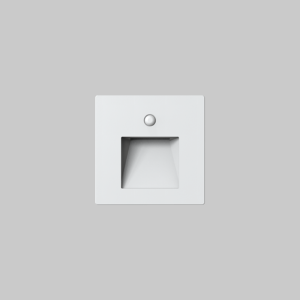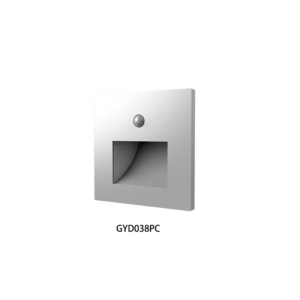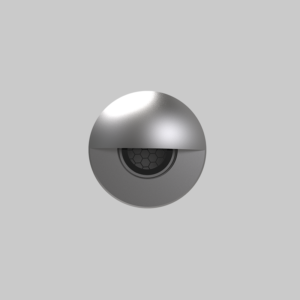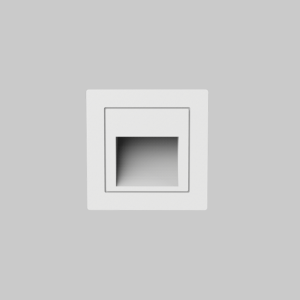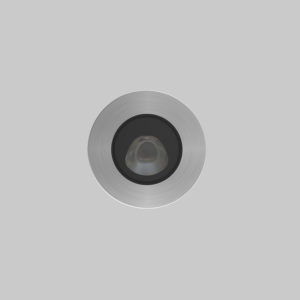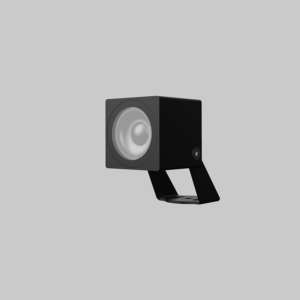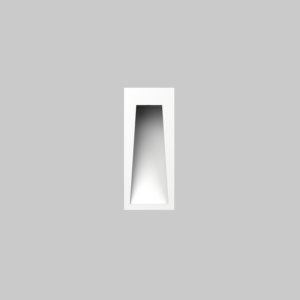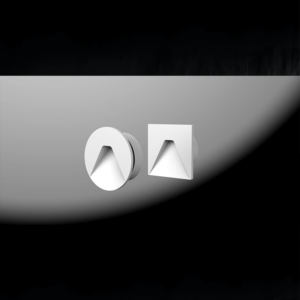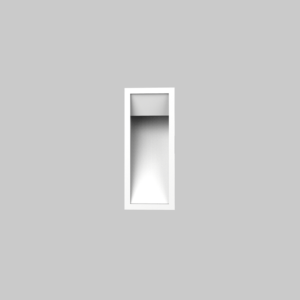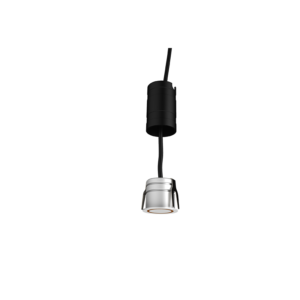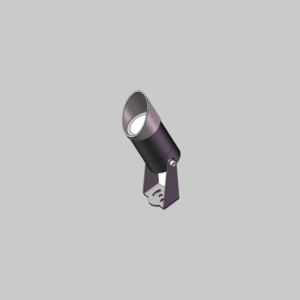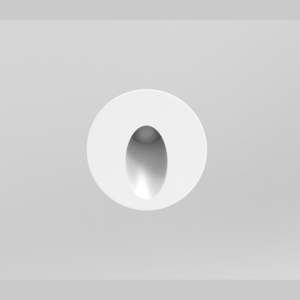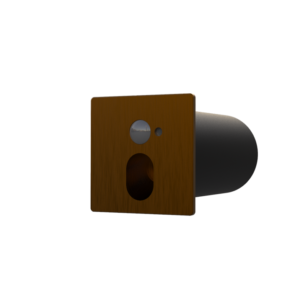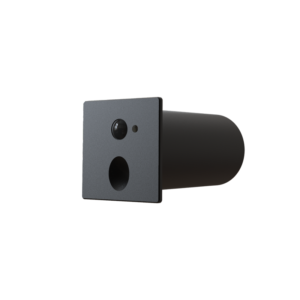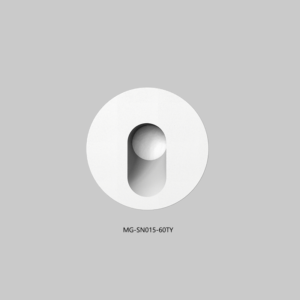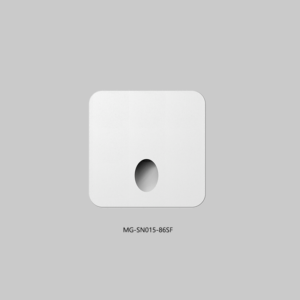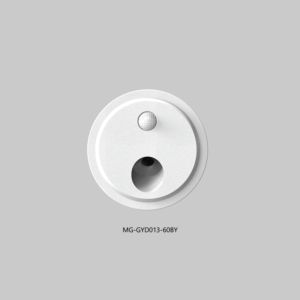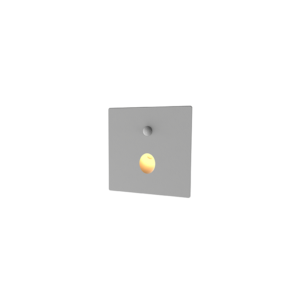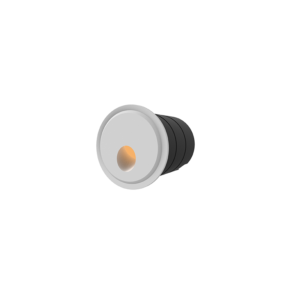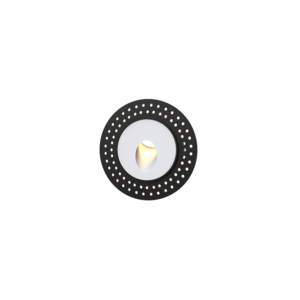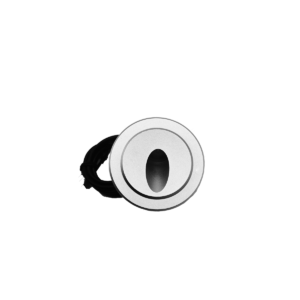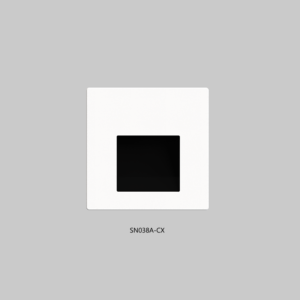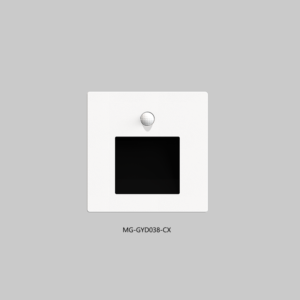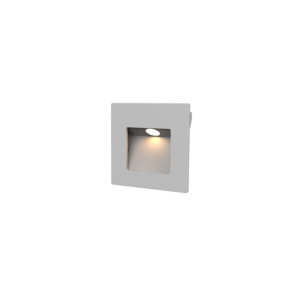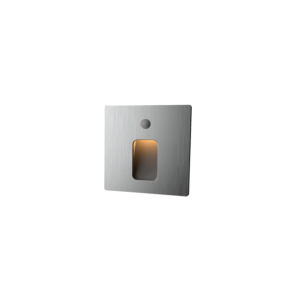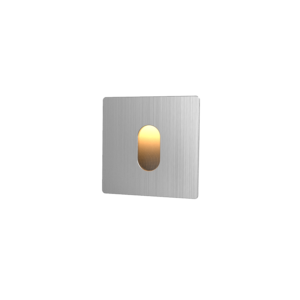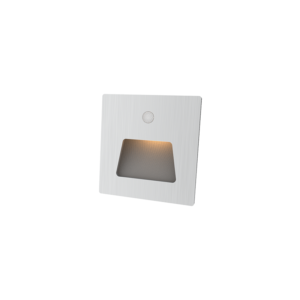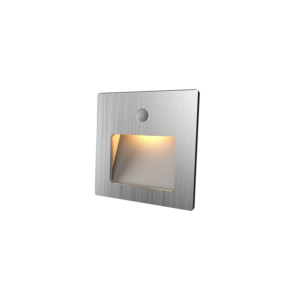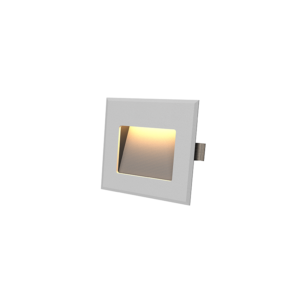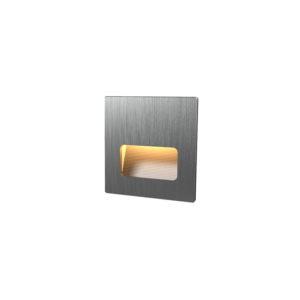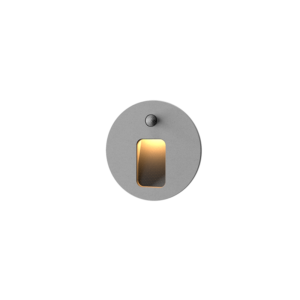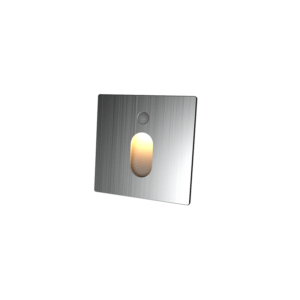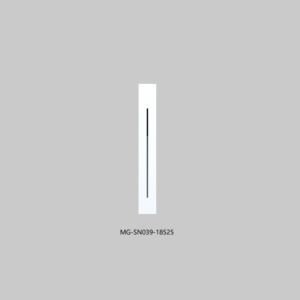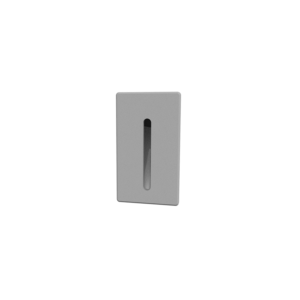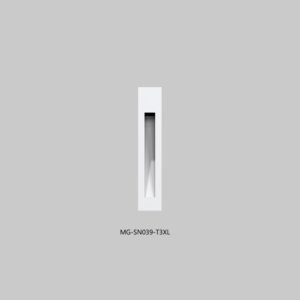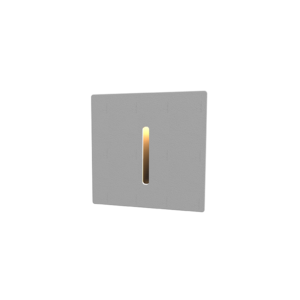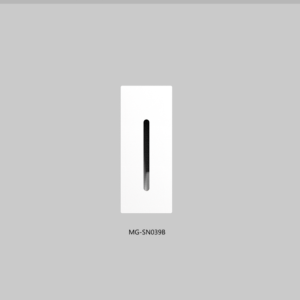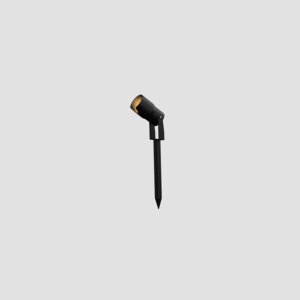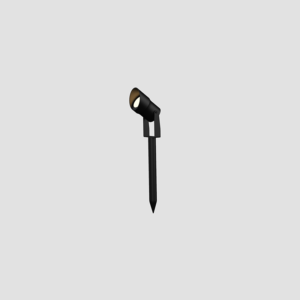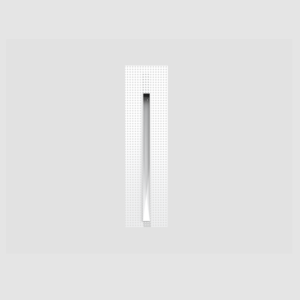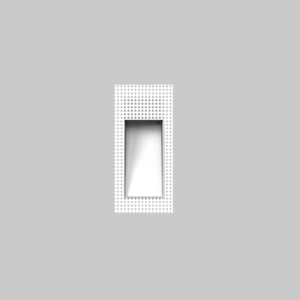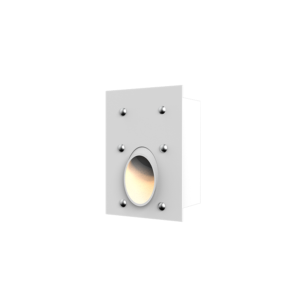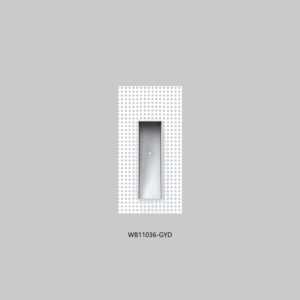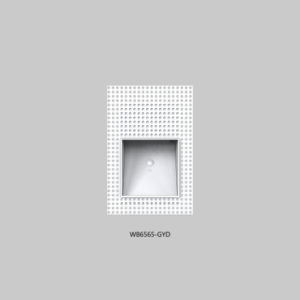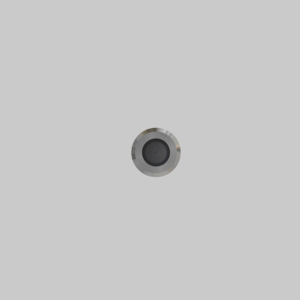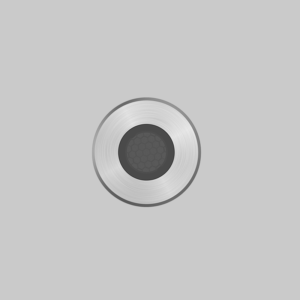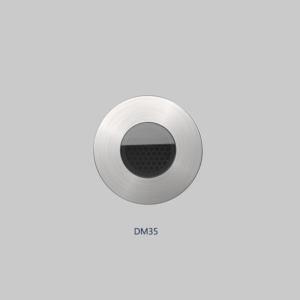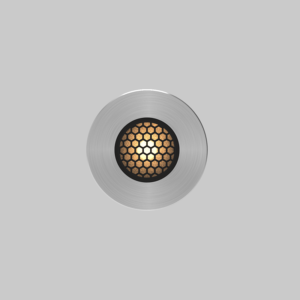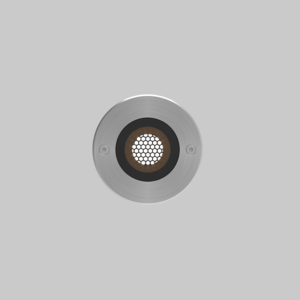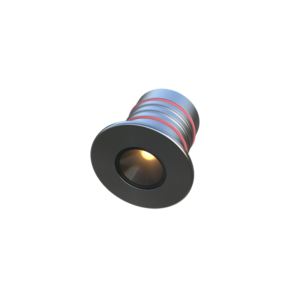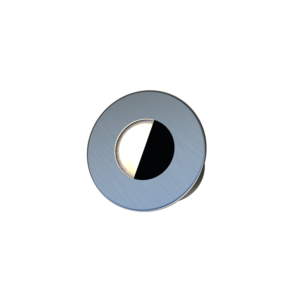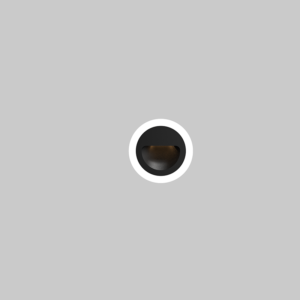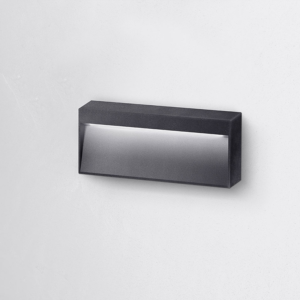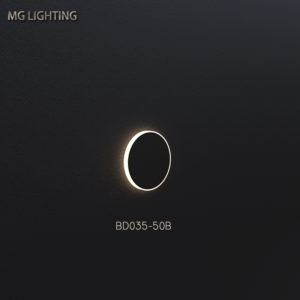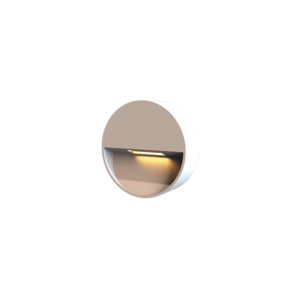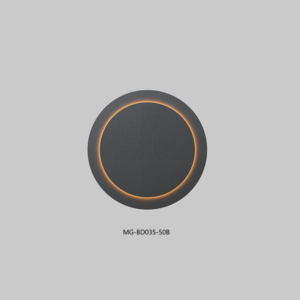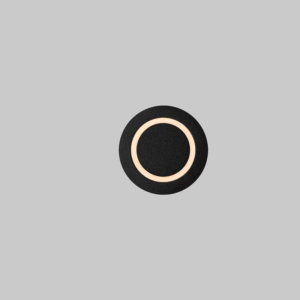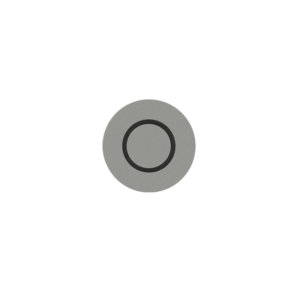Introduction
When designing outdoor or indoor staircases, step lighting emerges as a critical element that bridges practicality and aesthetics. Beyond mere illumination, step lights serve as silent guardians of safety while enhancing architectural beauty. Central to their effectiveness lies the strategic selection of color temperature—a parameter that dictates visual comfort, emotional appeal, and functional performance.

The Multifaceted Role of Step Lights
Step lights fulfill three primary objectives that underscore their value in modern design:
Safety Enhancement
By clearly delineating stair edges, these lights prevent nighttime falls, particularly critical in high-traffic areas or homes with elderly/young residents.
Aesthetic Elevation
Well-chosen step lights transform staircases into design features, complementing architectural styles—from minimalist modern to rustic charm.
Functional Ambiance
They provide task lighting for safe navigation while contributing to mood-setting, whether for welcoming guests or creating intimate spaces.

Fundamental Theory of Color Temperature: Expert Guide to Lighting Selection
I. Core Definitions and Measurement Units
Color temperature (measured in Kelvin, K) quantifies the spectral composition of light sources, describing its chromaticity rather than physical heat. This metric derives from the color emitted by a theoretical blackbody radiator heated to specific temperatures.
Kelvin Scale Interpretation
- 2700K-3000K: Warm light zone (incandescent equivalent)
- 4000K: Neutral light benchmark (natural daylight reference)
- 6500K: Cool light threshold (overcast sky simulation)
Practical Applications
- Luxury hotel lobbies prefer 3000K for opulent ambiance.
- Precision manufacturing uses 5500K for visual acuity.
- Surgical suites adopt 4000K-4500K for tissue color accuracy.

II. Spectral Characteristics of Three Color Zones
1. Warm White Range (2700K-3000K)
- Visual Impact: Sunset-like golden hues promoting relaxation.
- Optimal Uses:
- Residential entryways (brass fixture pairings)
- Japanese restaurants enhancing food warmth
- Nighttime step illumination (30% improved tread visibility)
2. Neutral White Range (3500K-4500K)
- Spectral Profile: Balanced blue-green components, CRI ≥80.
- Professional Uses:
- Art gallery displays (4000K for oil painting authenticity)
- Office document zones reducing eye strain
- Modern glass facades minimizing glare
3. Cool White Range (5000K-6500K)
- Efficiency Advantage: 15-20% higher efficacy than warm light.
- Specialized Applications:
- Industrial inspection stations (6000K defect detection)
- Gemology lamps preserving fire brilliance
- Outdoor steps (6500K fog penetration boost)

III. Synergy Between CRI and Color Temperature
Color Rendering Index (CRI) measures a light source’s ability to render true colors (0-100 scale).
CRI-Temperature Relationship Matrix
| Temperature Range | Typical CRI | Applications |
|---|---|---|
| 2700K-3000K | 80-85 | Residential/leisure |
| 4000K | 85-90 | Retail/office |
| 5500K-6500K | 75-80 | Industrial/specialized |
Optimized Combinations
- Retail Stores: 3500K + CRI90 enhances fabric vibrancy.
- Surgical Lights: 4000K + CRI95 ensures tissue recognition.
- Safety Lighting: 3000K + CRI80 balances energy efficiency and visibility.
Comprehensive Guide to Color Temperature Selection for Step Lights
I. Residential Settings: Human-Centric Lighting Solutions
1.1 Indoor Staircase Lighting
- Core Requirement: Creating safe and cozy circulation environment.
- Recommended CCT: 2700K-3000K warm white.
- Scientific Basis: Human retina shows 40% higher sensitivity to long wavelengths (yellow-orange) in dark environments.
- Implementation Tips:
- Embedded LED strips with 2-3 light points per step.
- Smart motion sensors activating 150-lumen night mode.
- CRI>90 for clear wooden handrail texture presentation.
1.2 Garden Pathway Design
- Special Challenge: Balancing plant color rendition with insect attraction.
- Innovative Solution: 3000K adjustable CCT system.
- Technical Breakthrough: 400nm UV cutoff technology reducing insect disturbance.
- Artistic Expression: Automatic amber tone (2200K) at dusk enhancing bronze sculpture texture.

II. Commercial Spaces: Precision CCT Marketing Strategy
2.1 High-End Retail Scenarios
- Luxury Stores: 3500K accent lighting + 4000K ambient light.
- Psychological Basis: 3500K enhances visual appeal of red products (18% sales increase reported).
- Technical Parameters:
- Display areas: CRI>95, R9>50 (saturated red rendition).
- Aisles: UGR<19 anti-glare design.
2.2 Office Space Evolution
- Smart Office System: Dynamic CCT adjustment program.
- Time Dimension:
- 9:00-11:00 4500K (focus enhancement).
- 14:00-16:00 4000K (visual fatigue relief).
- Spatial Dimension:
- Creative zones: 3500K for idea generation.
- Data processing areas: 5000K for detail recognition.
III. Public Facilities: Safety & Aesthetic Balance
3.1 Transportation Hub Lighting Standards
- National Code Interpretation: GB/T 36677-2018 Public Building Lighting Code.
- Key Metrics:
- Ground level illuminance ≥200lx.
- CCT ≤4000K (blue light hazard prevention).
- CRI Ra≥80.
3.2 Landscape Lighting Practices
- Smart Pathway Case: Shanghai Riverside Walkway adjustable system.
- Technical Architecture:
- Day mode: 6500K cool white (natural light simulation).
- Night mode: 2700K warm light (35% energy saving).
- Festival mode: RGBW fixtures for thematic displays.

IV. Stylized Design: CCT Dialogue with Architecture
4.1 Modern Minimalist Style
- Material Expression:
- Metal elements: 4000K cool white enhancing industrial texture.
- Glass facades: 5000K eliminating reflections.
- Case Study: Beijing Galaxy SOHO’s 3000K-4000K gradient system.
4.2 Neo-Chinese Landscapes
- Cultural Expression:
- Pavilions: 2400K custom warm light restoring ancient charm.
- Water features: 3000K with ripple lenses simulating moonlight refraction.
V. Special Needs: Age-Friendly Design
5.1 Elderly-Oriented Lighting
- Medical Basis: 40% reduced blue sensitivity due to lens yellowing.
- Solutions:
- Main lighting: 3000K + CRI90.
- Night lights: 1800K candle mode (circadian rhythm protection).
5.2 Children’s Play Areas
- Safety Standards:
- CCT ≤3500K (retina protection).
- Flicker depth <0.5% (IEEE compliance).
- Interactive Design: Pressure-sensitive color-changing step lights.
VI. Long-Term Operations: Lifecycle Cost Optimization
6.1 Energy Efficiency Formula
- Economic Model: Total Cost = Initial Investment + Σ(Annual Energy Cost – Maintenance).
- Case Comparison:
- Option A: 3000K halogens (¥8,000/yr, 2-year life).
- Option B: 4000K LEDs (¥1,500/yr, 10-year life).
- Conclusion: 62% saving with LED over 10 years.
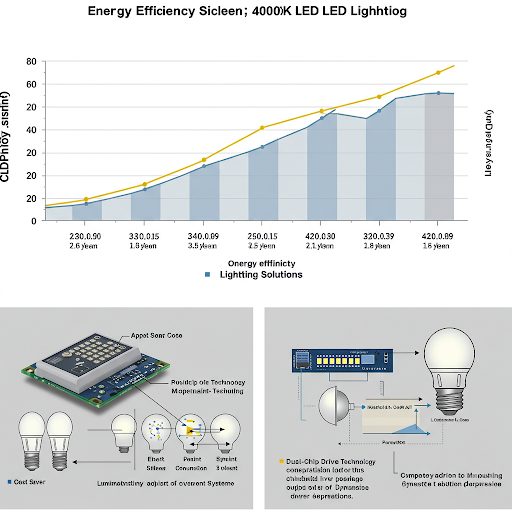
6.2 Lumen Degradation Compensation
- Innovative Solution:
- Dual-chip drive technology with auto-switch at 10% depreciation.
- Smart monitoring system maintaining <5% CCT drift within 5 years.
Professional Recommendation: Step light CCT selection should follow “scene-driven, style-harmonized, tech-enabled” principles. New constructions should reserve smart dimming interfaces. Existing buildings can adopt modular LED fixtures with replaceable light sources for CCT adjustment, balancing economics and sustainability.
Detailed Comparison of Different Color Temperature Ranges and Guide to Step Light Color Temperature Selection
I. Warm White Light Range: 2700K-3000K
- Core Characteristics
- Visual Perception: Emits a warm, yellowish hue similar to sunset, creating a cozy and relaxing atmosphere.
- Blue Light Content: Low in blue light, reducing retinal stimulation and preventing visual fatigue during prolonged use.
- Emotional Impact: Aids melatonin production, improving sleep quality and enhancing the warmth of spaces.
- Advantages
- Home Adaptability: Suitable for residential staircases, garden paths, and cafes, enhancing nighttime safety and comfort.
- Health Benefits: Reduces blue light hazards, making it ideal for elderly and children’s rooms requiring eye protection.
- Artistic Expression: Warm lighting contrasts with wooden decor in cafes, adding depth to the space.
- Limitations
- Brightness Constraints: May lack sufficient brightness for high-illumination public spaces like malls.
- Detail Clarity: Low color temperatures may reduce object color saturation, affecting visual clarity in dark areas.
- Typical Application Data
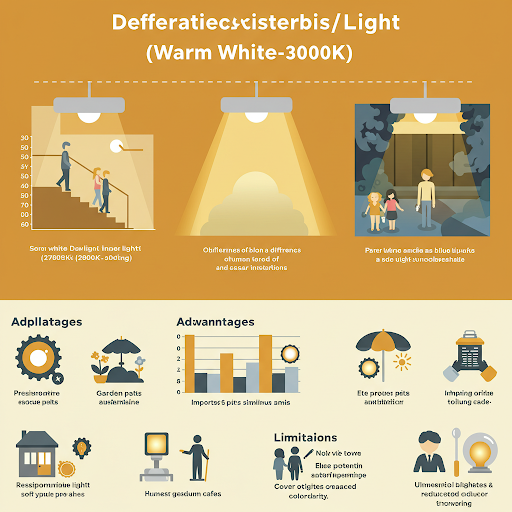
| Scenario Type | Color Temperature | Illumination Requirement | CRI Requirement |
|---|---|---|---|
| Residential Stairs | 2700K | 100-150lx | >80 |
| Garden Paths | 3000K | 50-80lx | >70 |
| Cafes | 2700K | 150-200lx | >90 |
II. Neutral White Light Range: 3500K-4500K
- Core Characteristics
- Visual Perception: Resembles natural light, balancing warmth and neutrality for high color rendition.
- Space Adaptability: Suitable for diverse scenarios, balancing functional lighting with ambiance.
- Efficiency Enhancement: Promotes focus and productivity in office and learning environments.
- Advantages
- Commercial Space Adaptation: Mall atriums using 3500K accent lighting enhance product details without harshness.
- Office Efficiency Optimization: Office staircases with 4000K lighting ensure safety and reduce visual fatigue.
- Artistic Precision: Modern art galleries use 4500K track lighting to accurately reproduce artwork colors.
- Limitations
- Emotional Expression Constraints: May lack warmth in romantic restaurants or leisure clubs.
- Personalization Conflicts: Neutral light may be seen as “lacking character” by those preferring extreme color temperatures.
- Typical Application Data
| Scenario Type | Color Temperature | Illumination Requirement | UGR Limit |
|---|---|---|---|
| Mall Public Areas | 4000K | 300-500lx | <19 |
| Office Stairs | 4000K | 200-300lx | <16 |
| Art Galleries | 4500K | 500-800lx | <13 |
III. Cool White Light Range: 5000K-6500K
- Core Characteristics
- Visual Perception: High-brightness, cool tones resembling overcast or midday sun for clear visual environments.
- Safety Alertness: Enhances object contour recognition, suitable for security monitoring.
- Physiological Impact: May suppress melatonin secretion, affecting circadian rhythms with prolonged exposure.
- Advantages
- Industrial Safety Enhancement: Factory production lines using 5000K lighting improve operational precision and reduce accidents.
- Public Security Improvement: Station platforms with 6500K floodlights enhance surveillance image clarity.
- Special Environment Adaptation: Underground parking lots using 5500K light strips solve parking difficulties in dimly lit areas.
- Limitations
- Health Risks: Prolonged exposure in cool white light may cause dry eyes and vision impairment.
- Space Coldness: May reduce comfort in hotel lobbies requiring a cozy atmosphere.
- Energy Costs: High color temperature fixtures typically consume more power, increasing long-term operating costs.
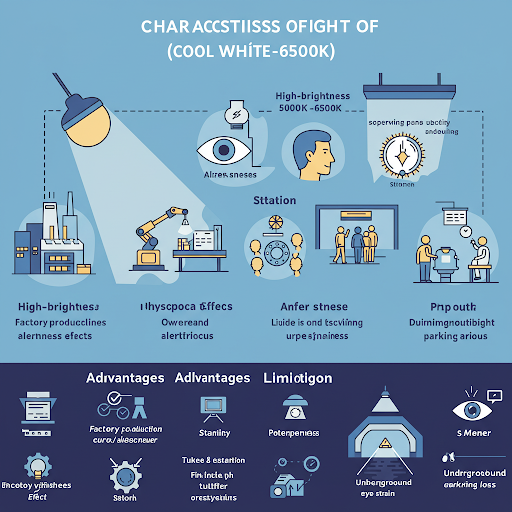
- Typical Application Data
| Scenario Type | Color Temperature | Illumination Requirement | Color Rendering Index |
|---|---|---|---|
| Subway Platforms | 6000K | 500-800lx | >85 |
| Factory Workshops | 5000K | 800-1000lx | >80 |
| Underground Parking Lots | 5500K | 200-300lx | >75 |
In-depth Analysis of LED Step Light Color Temperature Technology and Product Selection Guide
I. Fixed Color Temperature LED Step Lights: Stable and Reliable Lighting Solutions
Technical Features Analysis
- Fixed CCT LED step lights utilize constant color temperature chips to deliver stable illumination. Core technical advantages include:
- Optical Stability: Single CCT encapsulation technology maintains ΔCCT < 200K.
- Cost Efficiency: Eliminates dimming drivers and smart modules, reducing costs by 40%-60%.
- Longevity Assurance: Constant current design reduces lumen depreciation by >30% compared to traditional fixtures.
Product Advantages
- Key Metrics:
- Color Rendering Index: CRI>85 (premium products reach CRI 90+).
- Lifespan Expectancy: 50,000 hours (17 years at 8h/day usage).
- Energy Efficiency: Tier 1 rating (luminous efficacy >90lm/W).
Application Scenarios
- Budget-sensitive commercial spaces (hotel corridors, office stairwells).
- Healthcare facilities (requires constant CCT for visual comfort).
- Outdoor step lighting (IP65 rating + stable CCT for safety recognition).
Selection Considerations
- CCT Matching Principle: Match material types (3000K warm light for wooden steps, 4000K cool white for stone steps).
- CRI Verification: Request IES files or on-site CRI measurements.
- Thermal Design: Prioritize aluminum PCB + thermal silicone solutions.

II. Adjustable CCT LED Step Lights: Revolutionary Smart Lighting Solutions
Technology Implementation Comparison
| Technology | Dimming IC Solution | RGBW Mixing Solution |
|---|---|---|
| Principle | PWM current regulation | Spectral mixing of multi-CCT LEDs |
| CCT Range | 2700K-4000K | 2200K-6500K |
| Color Performance | Natural transitions | Achieve non-continuous CCT values |
| Cost Structure | Moderate | Higher (multi-chip synergy required) |
| Typical Applications | Residential settings | Commercial display spaces |
Multi-Scenario Application Modes
- Circadian Rhythm Mode:
- Morning (6:00-8:00) 4000K cool white enhances alertness.
- Night (20:00-22:00) 2700K warm light promotes melatonin secretion.
- Festive Atmosphere Creation:
- Spring Festival Mode: 3000K warm light + red decorative accents.
- Christmas: 2800K candlelight effect + green highlights.
- Safety Warning Function:
- Emergency mode switches to 6500K cool white (enhanced visibility).
- Pressure-sensitive step triggers localized highlights.
III. RGBW Multi-Color Fixtures: Ultimate Creative Lighting Solutions
Color Space Expansion Technology
- Adopts MacAdam ellipse color gamut control, achieving:
- 16.7 million color combinations (30% beyond sRGB standard).
- CCT adjustment precision ±50K.
- Dynamic gamut compensation technology (auto color deviation correction).
Creative Application Solutions
- Art Installations:
- Museum steps: DMX512 control for exhibit-synchronized color changes.
- Urban landmarks: 24bit color depth light shows.
- Commercial Operations:
- Retail stores: Seasonal theme color transformations (winter warm brown/summer cool blue).
- Entertainment venues: Sound-reactive systems (music rhythm-triggered color changes).
- Smart Home Integration:
- Security system linkage: Red alert light activation during intrusions.
- Health monitoring: Light color changes indicating exercise rhythms.

Customization Services
- Spectral Customization: Specific wavelength combinations (e.g., 450nm blue light for plant growth).
- Dynamic Effect Library: 50+ preset scene modes (including medical rehabilitation flicker modes).
- Structural Customization: 3D-printed flexible shades (adaptable to irregular step designs).
IV. Driver Systems: Invisible Guardians of CCT Stability
Power Technology Evolution
| Stage | Power Type | CCT Stability | Typical Applications |
|---|---|---|---|
| 1.0 | RC Power | ±300K | Early low-cost products |
| 2.0 | Linear Power | ±200K | Medical lighting devices |
| 3.0 | Constant Current | ±100K | Commercial-grade products |
| 4.0 | Digital Power | ±50K | High-end smart fixtures |
High-Quality Driver Identification Guide
- Ripple Test: Premium drivers maintain ripple factor <1%.
- Efficiency Certification: 80PLUS certified drivers >90% conversion efficiency.
- Protection Mechanisms: Overvoltage/overcurrent/short-circuit triple protection.
- Lifespan Matching: Driver lifespan should exceed 80% of fixture lifespan.
V. Professional Selection Guide: Five Steps to Perfect Step Lighting
Step 1: Needs Assessment
| Scenario | Priority Metrics | Secondary Metrics |
|---|---|---|
| Residential stairs | CRI>90, adjustable CCT range | Energy efficiency rating |
| Commercial spaces | Lifespan>50,000h, IP rating | Smart control |
| Outdoor steps | IP67 rating, impact resistance | CCT stability |
Step 2: Technical Parameter Decoding
- CRI: Require CRI>90, R9>50 (special applications).
- CCT Tolerance: Premium products <3 SDCM (Standard Color Difference Matching).
- Light Distribution: Batwing optics (reduce glare).
Step 3: Smart Function Selection
- Basic: 3-level dimming + timer function.
- Advanced: APP scene modes + daylight tracking.
- Professional: DMX512 control + color calibration system.

Step 4: Installation Guidelines
- Spacing Formula: L=H/tanθ (H=step height, θ=beam angle).
- Wiring Standard: 24V low-voltage requires shielded twisted pair cables.
- Thermal Design: Power density <8W/m.
Step 5: Maintenance Strategy
- Quarterly CCT calibration (using spectrophotometer).
- Replace thermal silicone every 2 years.
- Establish lumen depreciation compensation (replace when light output <70% of initial).
Comprehensive Maintenance Guide for LED Step Lights: Detection, Cleaning, and Troubleshooting
I. Periodic Inspection & Maintenance: Precision Control of Light Quality
1.1 Professional Tool Detection of Color Temperature (CCT) and Color Rendering Index (CRI)
- Core Equipment Selection
- Recommend using spectrophotometers (e.g., Konica Minolta CL-200A) or spectral analyzers (e.g., Ocean Optics STS-VIS) for accurate measurements of CIE 1931 chromaticity coordinates, correlated color temperature (CCT), and color rendering index (CRI). For general users, smartphone apps (e.g., Light Spectrum Pro) offer preliminary detection capabilities, though ambient light interference should be minimized.
- Standardized Testing Protocol
- Warm-up Phase: Operate lights for 30+ minutes to stabilize output.
- Measurement Distance: Maintain 20-30cm vertical distance between sensor and LEDs.
- Environmental Control: Conduct tests in darkrooms or under light shields.
- Calibration: Use D65 standard light source for device calibration.
- Key Parameter Interpretation
- CCT: 2700K (warm yellow) for residential steps, 4000K (neutral white) for commercial spaces.
- CRI: ≥80 for premium quality, museum-grade applications require ≥90.
1.2 In-Depth Cleaning Protocols
- Four-Step Cleaning Method
- Power Down: Shut off main breakers and verify zero residual current.
- Tool Preparation: Use microfiber cloth + isopropyl alcohol (≤75% concentration).
- Cleaning Path: Wipe along fixture length to avoid abrasive damage.
- Thermal Inspection: Clean heatsink fins simultaneously to improve cooling efficiency by 20%+.
- Specialized Scenario Handling
- Coastal Areas: Apply silicone anti-fog spray to lenses quarterly.
- High-Pollution Zones: Use compressed air instead of liquid cleaning.
II. Troubleshooting Encyclopedia
2.1 In-Depth Analysis of CCT Deviation
- Three Primary Causes
| Cause Type | Diagnostic Method | Solution |
|---|---|---|
| Aging drivers | Measure output voltage fluctuation (≤5% tolerance) | Replace with identical spec constant-current drivers |
| Poor cooling | Infrared thermometer detection (≤65℃ threshold) | Add heatsinks or thermal paste |
| Batch variation | Compare test data across same-batch fixtures | Contact manufacturer for CCT recalibration |
- Emergency Measures
- Temporary adjustment: Increase installation density by 10-15cm to compensate brightness deviation.
2.2 Comprehensive Management of Lumen Depreciation
- Full-Cycle Management Plan
- Preventive Measures: Select LM-80 certified products (<3% depreciation @6000 hours).
- Mid-Cycle Monitoring: Conduct annual spring/autumn luminous flux testing (recommend TES-1339 light meters).
- Late-Cycle Intervention: Initiate replacement when illuminance drops below 70% of initial value.
- Innovative Maintenance Strategies
- Create digital twins: IoT sensors for real-time depreciation monitoring.
- Staggered replacement: Replace 1/3 fixtures every 2 years for cost-effective maintenance.
Frequently Asked Questions (FAQ)
- Q1: How to handle CCT anomalies?
- Answer: Immediately record affected fixture locations, use thermal imagers to detect temperature distribution, prioritize driver replacement.
- Q2: Possible causes of post-cleaning CRI drop?
- Answer: Residual cleaners cause yellowing, require UV cleaning equipment intervention.
- Q3: How to estimate maintenance intervals?
- Answer: Formula: Maintenance Cycle (years) = Rated Lifetime (hours)/Daily Usage Hours×365


